Whether you’re a caravanning beginner or an old hand, there’s always something new to learn.
In this video, experienced caravanner and towing instructor Felicity Spinks shares some top caravanning and towing tips so you can avoid making some common mistakes, which can sometimes lead to a costly caravan insurance claim.
Preparing your caravan for towing
Fliss’s top tip before heading off with a caravan in tow is to make sure that you have loaded your caravan correctly and checked the nose-weight.
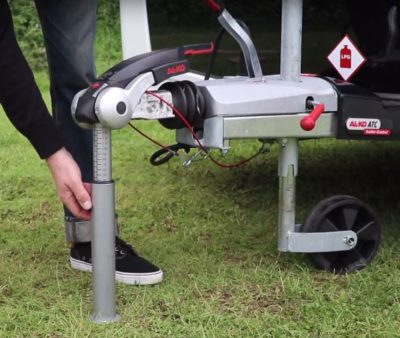
“It will guarantee a more stable tow on the road,” she said.
Her next tip is to have a pre-departure checklist so you don’t forget something vital.
“It could be something like taking a wheel lock off, or removing the rollers from the motor mover,” said Fliss. “I’d also make sure that when you’re hitching up, you do a ‘rewind’ or a ‘stress test’. That is, once you’ve coupled to the car, you rewind the jockey wheel and it raises the back of the car. That then confirms that will not detach when you’re out on the road, or you have campsite shame and the caravan falls off as you go over the last speed bump when you’re leaving site!”
Towing on the road
First, Fliss advised making sure your towing mirrors are attached and set correctly so you can see four metres out and 20 metres back.
“You don’t need to be able to see a lot of caravan, and you don’t need to see the roof of the caravan,” she said. “It’s more important you can see vehicles coming up alongside you.”
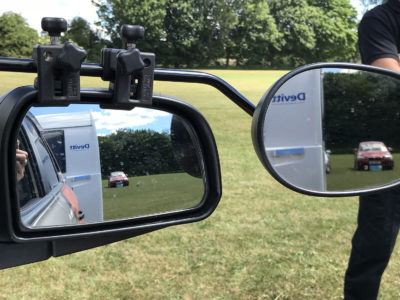
“When you’re out on the road, remember that you’re double if not treble the length of a solo vehicle, so you need to double or treble all your actions. Your stopping distances are going to increase and you’re going to need to double or treble the time to merge onto a roundabout or pull out from a junction.”
Fliss has a top phrase for when towing on a roundabout and that’s “drive on the pizza crust”.
“If you imagine that roundabout is a pizza, driving on the crust will keep that caravan neatly within the white lines, and you won’t cause a problem to any motorists on your right hand side,” she said.
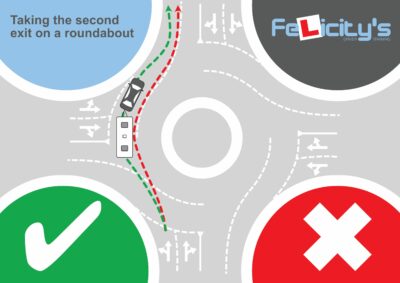
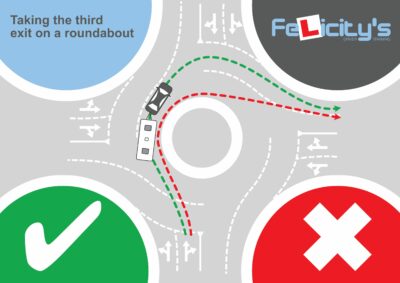
“The other phrase I like to use is ‘straight and late’. Keep straight, turn late.” Fliss said that when you’re towing and turning left at a junction, the misconception is that you should move out to the right before turning left.
“This will create excessive tail swing on the caravan,” said Fliss. “So the easiest way to resolve this is to stay straight for longer and turn later into that junction or gateway that you’re going into.” Check out the green and red dotted lines on the below graphic which show the correct (green) and incorrect (red) lines to take when turning.
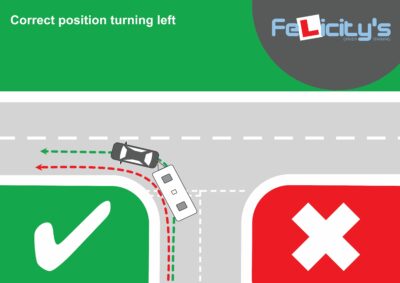
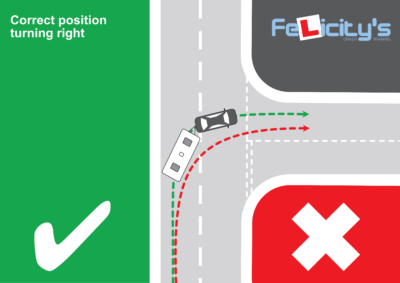
She also likes to use the phrase ‘slow to flow’.
“You approach something slowly enough so that all the traffic in front of you clears out the way, and it gives you time to then assess the situation, make a good decision, and then proceed out of that junction or onto that roundabout without coming to a complete stop,” added Fliss. “It helps with momentum, keeps you calmer, and keeps the passengers in comfort because you’re not stop-starting all the time.”
Avoiding caravan snaking
A big concern for a caravanner is encountering a snaking situation. One of the main causes of caravan snaking can be wind displacement.
“So if you’re being overtaken by a high-sided vehicle and you feel like you’ve been knocked about by that vehicle – that’s the wind displacement,” said Fliss. “My first top tip to reduce that is to move away from that overtaking vehicle. So if you’re on the motorway, just move towards the hard shoulder a little bit. Not onto it, but just towards it. My second tip is to make sure you’re “pulling”.
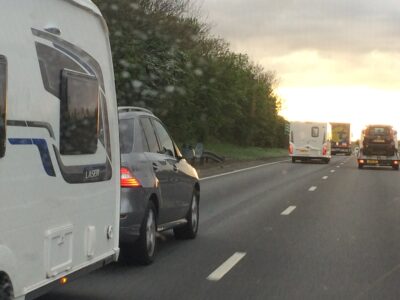
Fliss said many people think by slowing down when a lorry starts to overtake them that it will get past them quicker so they can get in front.
“But actually the moment you come off that gas pedal, you’re making the whole unit quite unstable. So make sure you’re pulling. Not racing, but pulling as that lorry’s overtaking you.”
Arriving on a campsite
A top caravan towing tip from Fliss before arriving on a campsite was to check your booking information or the website of the campsite for advice on the best approach route and things to watch out for.
A lot of campsites now have electric barriers. there will be lots of posts and markers, as well as, trees, shrubs, pot plants, decorations, etc. A common caravan insurance claim is for accidental damage caused by manoeuvring mishaps.
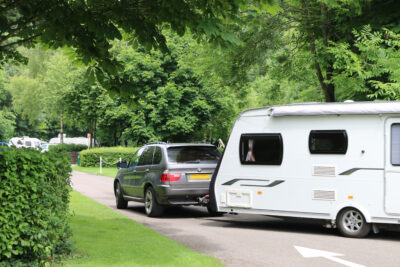
“When you’re on a campsite, keep the speed really slow. Not only have you got all these obstacles but there will be people, families, children, dogs,” added Fliss. “Be mindful of a lot of pedestrian traffic and when you’re negotiating around a campsite, sometimes the roadways can be quite narrow. So I always recommend that if you’re trying to do a tight left turn, that you hug the left-hand side of that roadway before you take that turn. Use the ‘straight and late’ analogy and that will take you around that corner and minimise the tail swing on the caravan that could be a problem to some object or even another pitched caravan or parked motorhome that could be on that other side.”
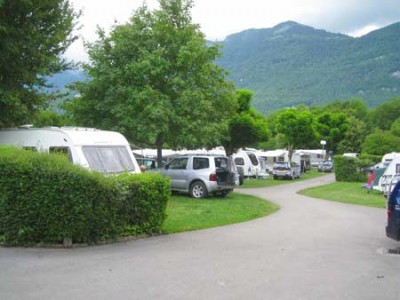
And don’t forget when going over a speed bump how many axles you now have on your towing outfit. Many people get the car over the speed bumps nice and slow and steady, and then start to accelerate before the caravan goes over the bump.
“So I always recommend that you count the axles,” advised Fliss. “If you’ve got a single axle caravan, it’s three. If you’ve got a double-axle caravan, you might hear a double bump as it goes over. If it’s an elongated speed bump, you need to count the axles going onto the speed bump but also coming off the other side.
“Not only is it just a bit more pleasant for you as the driver, but also everything you’ve packed into that caravan should remain where you packed it.”
Reversing a caravan onto a pitch
Firstly, carry a pitch inspection before you attempt the manoeuvre.
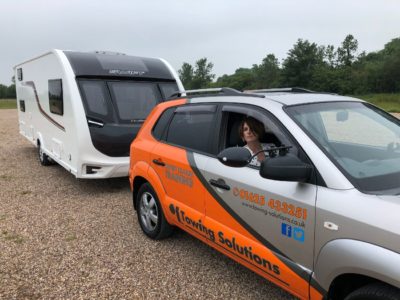
“Get out of the vehicle, have a look at the pitch, look where there are any posts or bollards, look where the electrical stand is, check for any overhanging branches and also make sure you’ve got enough room to actually swing the car round to put that caravan onto the pitch,” said Fliss. “If in any doubt at any stage, don’t ever see it as a sign of failure to use the motor mover to get that caravan safely onto its pitch. And if you do use your motor mover, it helps you be inch perfect on your pitch, it makes applying security devices much easier, and it can assist you with levelling the caravan.
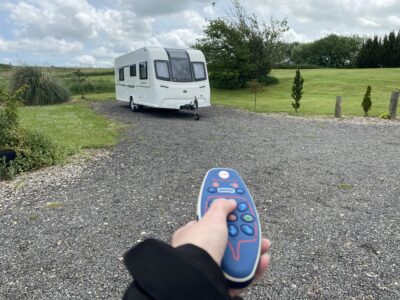
If you’ve reversed your caravan onto the pitch, you need to remember that your last manoeuvre is always a “pull-forward.”
“The purpose of the pull-forward manoeuvre is to decompress the hitch and re-engage the brakes. But at the same time, you can also pull up the levelling ramp and/or align your wheel ready for the axle wheel lock. So it’s one manoeuvre, but it’s satisfying several jobs that you need to do when you get onto pitch.”
If you’re having trouble trying to uncouple your car and caravan and the caravan feels like it’s stuck to the tow ball, nudge your car forwards and back a tiny amount to release the hitch so you can raise the caravan hitch away from the tow bar.
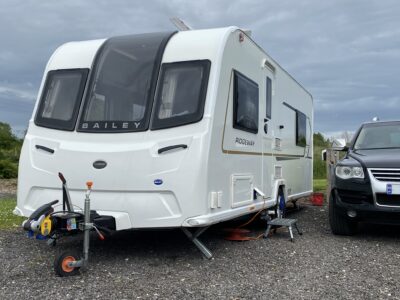
“When you’ve uncoupled the car and moved it out of the way, make sure you go round and put on all the security devices that you have declared to your insurance company.”
Putting your caravan into storage
The final caravan towing tips from Fliss focus on putting your caravan back into storage – either at home or at a caravan storage site.
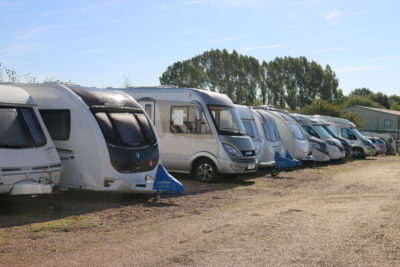
“Use the motor mover where possible, as you’re going to be able to see all four corners of that caravan as it’s coming back onto its pitch,” said Fliss. “I recommend standing behind the caravan so you can see the path that it’s going to be taking, to make sure it’s not a problem to other units parked alongside you. If you haven’t got a motor mover and your caravan is light enough, consider pushing it into the pitch. If you have someone to help you, they can be using a handle at the back of the caravan, you’re at the front of the caravan, and then you’ve got that all-round observation as you’re manoeuvring on that storage yard.
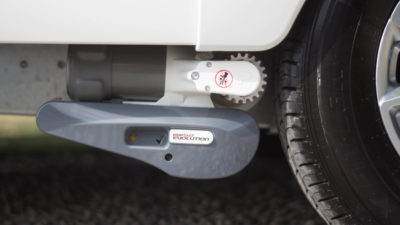
“The only time I would say to use the car is if you’ve got a nice big pitch, and also if you’ve got the opportunity to do a straight line reverse into your storage bay.”
If storing your caravan at home, there are likely to be a lot more things in the surrounding area, such as your garden, pot plants, the garage door, hanging baskets, guttering, walls and fence posts etc..
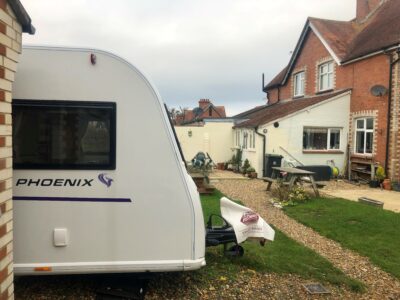
“Again, I would recommend using a motor mover for this exercise,” said Fliss. “And a top tip is to park the caravan nose in. If you nose the caravan up to the garage door, up to the hedge or the fence, you’re making it harder to steal.
“Whether you’re storing your caravan in a storage yard or on your driveway, make sure you leave it with the nose wound down into the little cutouts on the bottom of the jockey wheel. This will allow water to run off the roof, make it harder to steal and will stop any lateral movement in the wind.”
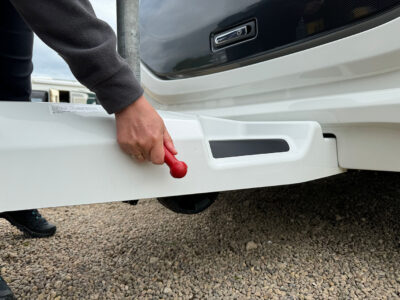
Finally, make sure you fit all your security devices that you’ve declared on your caravan insurance policy, and have a checklist of all the things you need to do inside the caravan, so you can leave your pride and joy safe and sound in its storage spot.
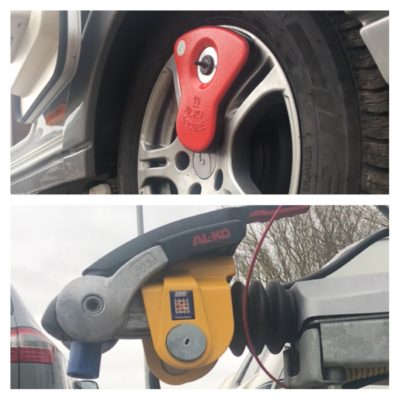
A caravan towing course
A towing course is a great way to brush up on your towing skills, increase your confidence, or get to know the basics if you’re a beginner. For those new to caravanning, a towing course can also get you an introductory no claims discount with Caravan Guard insurance.
*Fliss, a Grade A driving instructor based in East Anglia, specialises in coaching people to tow and drive leisure vehicles. As a motorhome owner and previously a caravanner, Fliss has used her personal experience and combined it with her driver training skills to also offer one-to-one confidence-building courses for people on towing a caravan or driving a motorhome.
Do you have any further towing tips to share? Please add them as a comment below.
(Introductory no claims discount subject to minimum premiums. Available at time of article publication in July 2024. We reserve the right to withdraw offers at any time).


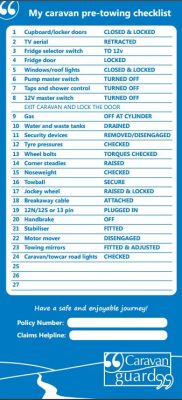
Excellent advice and useful check list